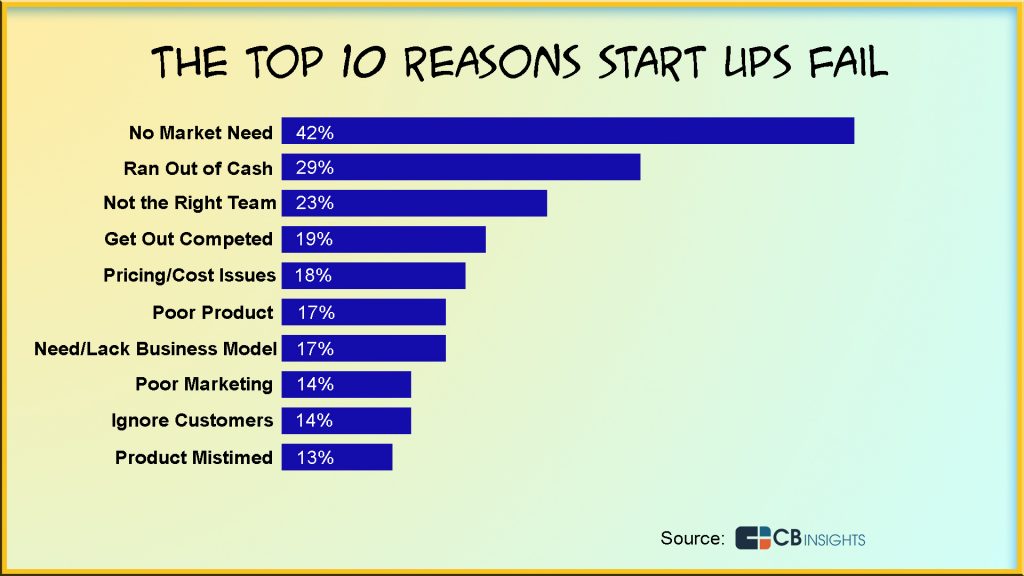Market Research and Competitive Analysis

Market Research
You have a great idea for a product or service. You can envision endless possibilities, substantial growth and potential rewards, a unique enterprise geared toward consumer demand. In fact, it’s quite genius, a business with an incredible idea that will thrive with exponential success. You may have a golden business idea and feel you can immediately start your new business without any problems. After all, the idea is so good that nothing can stop you from being successful, right? However, the reality is quite different. Your optimism is inspiring, but the last thing anyone should do is rush into a business venture without doing their due diligence and conducting an in-depth market analysis of their idea, service and product. Not understanding the niche market is a sure way to sabotage a business before it even has a chance to begin.

Starting a business, whether big or small, requires analyzing metrics, trends, demographics, and behaviors that might decide the fate of or success of the business. In the enthusiasm to start a business what most entrepreneurs tend to overlook is the purpose of the business. If an idea is practical, it is likely to work out. Unfortunately, if the idea is not fleshed out properly, then the chances of a business-facing heavy loss or failure would be very high. To avoid all the hassles and ensure a business runs smooth, initiating your own market research is a must.

Market research helps your business to understand the primary motive of the consumers in choosing its products. It also helps to analyze and identify factors that employ an influence on the buying decisions of the consumers such as personal, cultural and societal. In short, a potential business owner will need to know the nature of the business they want to pursue as well as figure out who their target demographic will be.
Before you begin market research, be sure your business idea is commercially viable. While there are some great ideas out there, they may fall short when they are scaled to a commercial level. Here are a few tips, which may help you obtain valuable market insight in order to get your business off on the right foot.

Is your idea Viable?
Market saturation
Does your geographical location have a similar business? If so, does this area need another business that is similar to the existing one? Check whether there is space for your business to thrive and flourish. Also, visit the local Chamber of Commerce to find out how much money your industry spends each year in your geographical region. This will allow you to judge whether there is potential for another similar business to break ground there.
Market demand
When a business starts, there should be a demand for it. There is no point in starting something that won’t have any takers. For example, does this area need another Seafood restaurant or another Electronic store?
Local competition
If there are similar businesses operating in your area, find out how well they are performing and what is unique about them that attracts customers. You should be able to offer customers something unique and valuable for them to leave an established business to frequent yours.
Target audience
You should have a way to reach out to your target audience. In the case you are starting a brick-and-mortar establishment, it is necessary that you open your store in an area that your target audience can easily access. On the other hand, if you are starting a digital business, how do you intend to reach your prospective customers? This is something you need to spend time on. You need to have a plan — a written one — to help you out.
Consumer Insight
Once you have established your target audience then the next considerations should be consumer insight. Here are some questions that should be answered when conducting market research:
- Who do you think would be your consumers and all the details of their age, income, occupation, educational qualification including the lifestyle they follow?
- What do they prefer buying? Details about their buying preference for your service or product and the measure they prefer to buy. Whom do they prefer buying from?
- The reason why a consumer chooses a specific product over others? This no doubt is a complex question, but it helps to understand the consumer psyche.
- What steps you can adopt to make the consumers buy from you. Though no doubt a difficult question, answers provided to this question will help you to plan your activities better and strive hard to meet success.
Competitive Analysis
The purpose of the competitive analysis is to determine the strengths and weaknesses of the competitors within your market, strategies that will provide you with a distinct advantage, the barriers that can be developed in order to prevent competition from entering your market, and any weaknesses that can be exploited within the product development cycle.
Having solid knowledge of a rival and their activity in the marketplace helps make better decisions during the product planning phase. It ensures that you are ready to respond to your competitors and exploit any weakness in order to gain a significant stake in the market.
Define your market
Understand the market you serve. Who are the customers in this market and what problem, need or want are they experiencing? What companies are currently satisfying these needs or wants and how do these businesses differ? Identify the products like your own and compare similar metrics such as price, functionality, and quality.
The best way to spot current and future competitors are to analyze your target product. You need to know how many branded and unbranded players there are in the market. You need to know if any new company is starting to sell a similar product or if any current company might stop selling the same. This will help to identify your direct and indirect competition.
Identify direct competitors
Once you’ve established your market you should now look at direct competitors to your product. These include any company that sells a very similar or identical product or service in the same footprint as your business idea. For example, if your company sells a specific service, you will only list your competitors as those offering a similar service that your customers can also purchase. If the competitor’s service does not extend to your company’s geographical footprint, there may be no point including this competitor in your analysis
If there are many competitors in your market, choose a handful of competitors that you believe are the largest contenders to your product, focus on their strategies and analytics.
Finding market share
Once you have identified the competition, next is to determine their market share. In order to appreciate the strengths and weaknesses of your competition you will need to understand their presence. Uncover the reason for the sales of your competition. Are they selling because the product is easily available, quality is high or the price is low?
Performing SWOT
A SWOT analysis is an incredibly simple, yet powerful tool to help you develop your business strategy, whether you’re building a startup or managing an existing business. SWOT stands for Strengths, Weaknesses, Opportunities, and Threats.
This is important as this shows where you stand in your industry, whom you need to benchmark to move forward and what strategies can be most effective to stay on top or to avoid a drop-in rank. The SWOT helps to determine where you can capitalize and move ahead of your competition.
Analyze competitors
It’s best to use available resources such as news articles, industry journals, analyst reports, the company’s website, marketing collateral, company reports and so forth. You may also want to do a general blog search to find out what their customers and others are saying about the company and the products they offer. Networking events and tradeshows also present great opportunities to collect data about your competitors.
Competitive Advantage
Market Research and Competitor analysis are essential for a business start-up to navigate a competitive industry and establish a presence within a Niche market. It is becoming an increasingly vital practice due to the rise of small business creations in every trade. Whether brick and mortar, service or online, each sector today is facing immense competition affecting margins and sales. Any start-up that forgoes such a process is setting themselves up to fail.
A critical analysis is not a one-stop-shop; it is a paramount process to be followed by any business to give them an edge and an advantage to outperform their competition, garnering insight and developing strategies to stand out, but only when they know their competition’s tactics.
One absolute you can be sure of, once you have opened your doors, you are the competition; Therefore, whatever strategies you make, your competitors are going to respond – triggering your mad research and analytic skills to reciprocate.
Are you interested in learning more about DRDA’s ROBS structure, the BORSA™ Plan? Give Suzy a call today at281-954-6023 for a free consultation.






